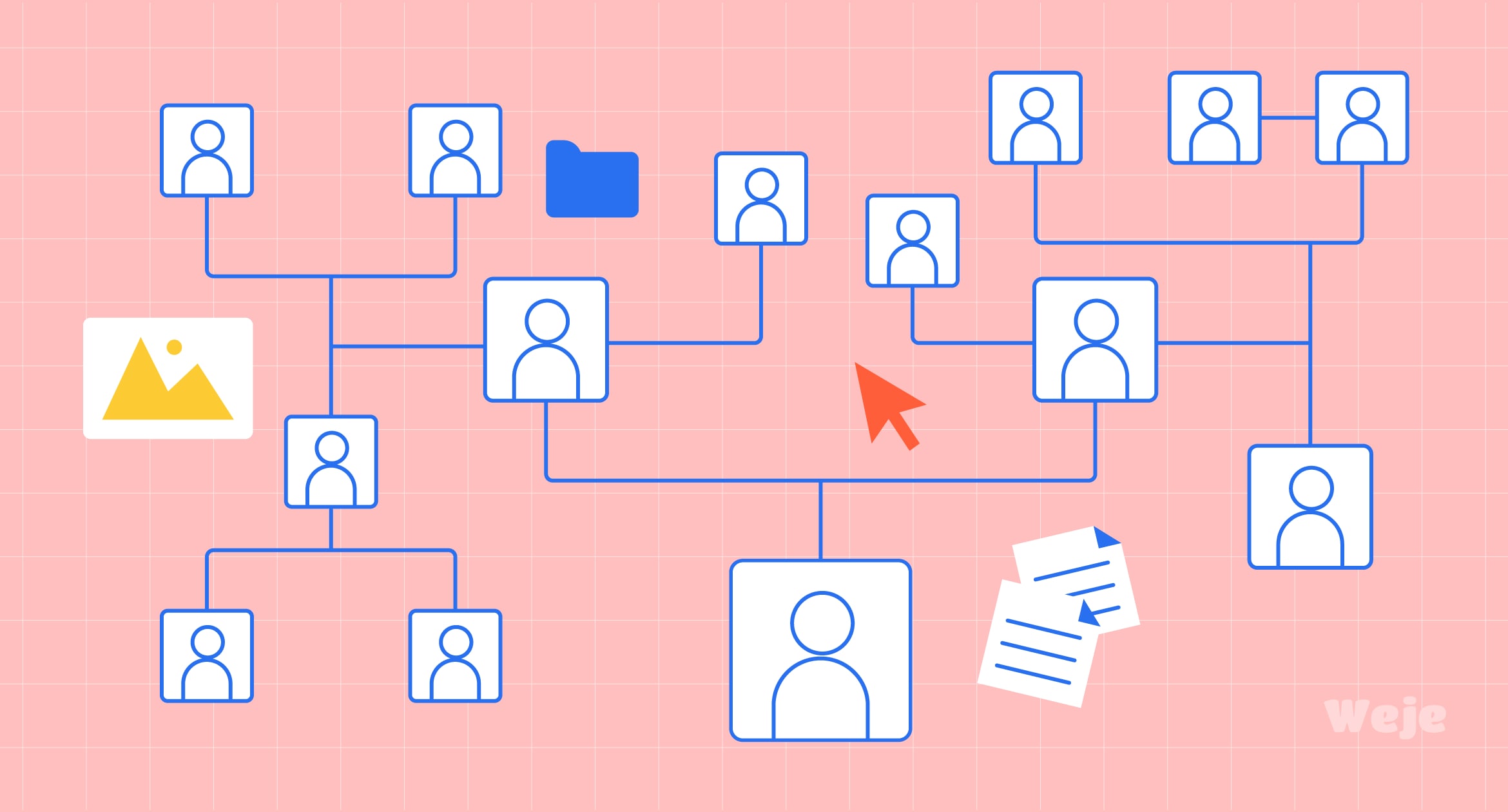What is a family tree?
A family tree is a graphical representation of an individual’s lineage. It highlights their relationship to their ancestors. Normally, it resembles an organizational chart because the diagram used is presented in the form of a tree that starts with one root. The root symbolizes a person.
Lines are drawn from the root to represent branches that end as leaves. All leaves drawn on the family tree point to a member of the family, and might indicate when they were born, their marital status and a date of death if they are deceased.
A family tree is an easy way of recording events, people and places that contribute to the history of your family. We will show you how to come up with your family tree diagram in this article.
History of family tree diagrams
We thought it would be good to highlight how the art of drawing family trees came by before teaching you how to draw one.
The interest to trace family roots was fostered by a TV series released by the American Broadcasting Corporation in 1977. The producers sought to create a 12 hour miniseries based on “Roots”, a novel by Alex Haley. It was thought that the concept represented in the novel would be of interest to ABC’s audience. The miniseries was also named “Roots”.
The series captivated millions of viewers and motivated many Americans to study their family roots. The best way of learning about the history of your family is by drawing a family tree.
Why should you create a family tree?
Are you interested in learning more about your ancestry? Maybe you want to understand your lineage or the origin of your ancestors. To answer all these questions, you might want to formulate a genealogy chart.
Some specific reasons for coming up with a family tree include:
- It explains your heritage.
- You are able to understand genetics and health concerns in your family.
- You get to comprehend whether one of your ancestors participated in a major historical event.
- It is a fascinating way of teaching your children a little about their ancestors. It helps preserve the story because you will have passed it on to the other generations.
- Creating family tree diagrams can be a fun exercise!
How to make a family tree chart?
Start by planning how you will draw your family tree. Consider aspects such as:
- How many past generations do you want to include?
- Where will you get the information to put down on the tree? Is there a family member that can give you the information you need to start off?
- What will you include on the leaves: dates of birth, marriages maybe?
- Do you intend to include pictures for each individual? Can you find the pictures easily?
Think about the direction you wish to represent the information in. While trees naturally grow to face the sky, family trees on a computer screen or paper can take a top down, bottom up or horizontal approach.
Make an informed decision by learning your options. We will highlight a few types of family trees and examples later in this article to help you out. It is important to note that no particular family tree definition elaborates the specific information to be included or the final outlook of the diagram. There are a lot of family tree chart makers and generators available online and some of them free :).
Step 1: Collect data about your family
Put down everything you know about your family on paper. Get information to fill gaps from family members. Remember to look for related documents and pictures about your family. Search through genealogy sources and libraries to find news, census records, and documents that can prove your lineage.
Be prepared to face limited material in your quest. Some documents may have been destroyed in forced evictions, accidents or simply misplaced. You might be lucky to trace up to four generations of your family.
Step 2: Create a family tree draft
Now that you have gathered some information about your family, use it to create a rough structure. Depending on your preferred family tree type, you can draw yourself first as you trace your ancestors, or begin with the oldest person as you narrow down to you.
You can draft the tree using a piece of paper and a pen or create it online.

Family Tree Chart Types and Examples
Kinship Chart
This is a good choice if you are not interested in drawing a comprehensive diagram. The kinship chart utilizes letters, lines and basic symbols to highlight relationships, helping you get a graphical picture of your lineage.
Ancestor chart
The ancestor chart points to your ancestors. It starts with a single ancestor, then grows upwards into two parents, followed by two pairs of grandparents and so forth. The structure takes on a similar approach for every individual.
Descendents Chart
It highlights all the descendants of a particular ancestor, or in this case, the proband. The proband is drawn at the top, then all children are drawn as you get to the bottom.
Sandglass Diagram
It combines features of the descendents chart and the ancestor chart. The main ancestor (proband) is shown at the middle of the diagram.
Step 3: Assigning information to the family tree leaves
Family members are represented by a figure linked by lines to describe their relationships with others in the family tree. You can use a shape of your choice, though the most common shapes are rectangles or boxes. The boxes represent a leaf. Whatever shape you choose to incorporate in your tree should be of consistent size to ensure that all information that you wish to include in it fits perfectly.
Try to make it simple. Present the diagram in a way that everyone in your family understands easily.
Leave out family secrets and try to be sensitive with the information that you include. Think about those who you would want to share the family tree with and what they would feel about certain aspects of your family.
Step 4: Share with your family members
Sharing information with your family is fun! It gives them a chance to celebrate their heritage as they learn about new dimensions of their family. Some might even recall additional information that you can use to enhance the existing family tree.
Examples of family tree diagrams
Published: February 14, 2021




